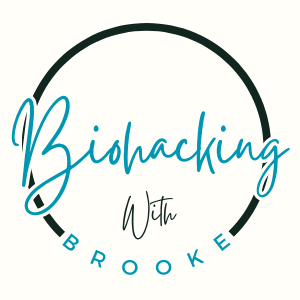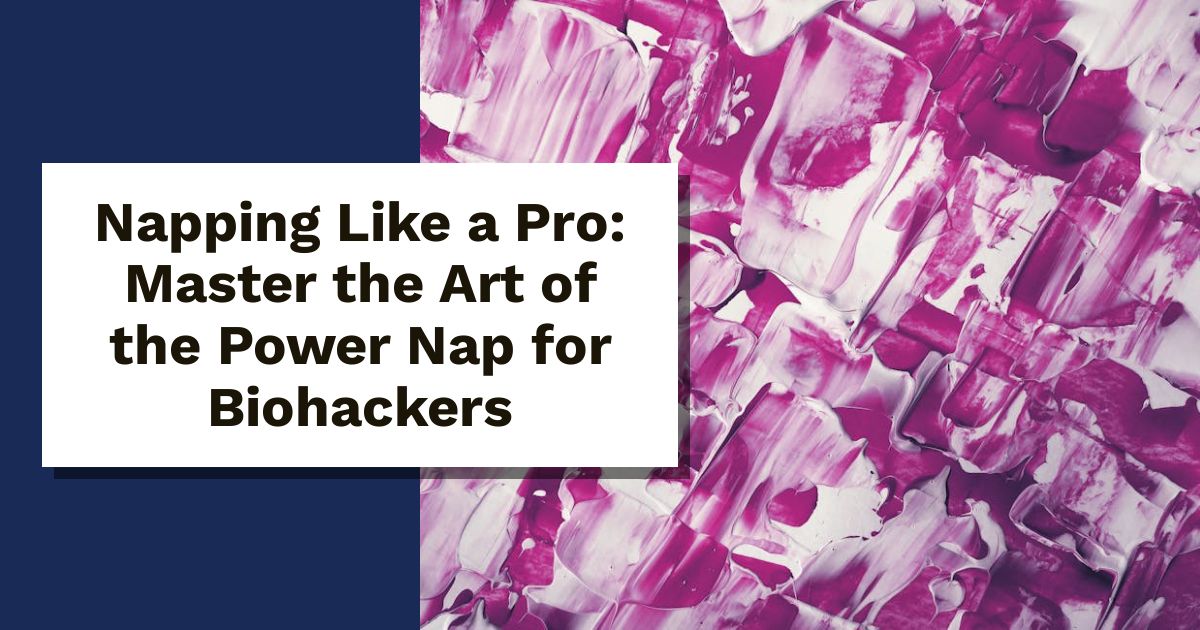Ever feel like your energy crashes after lunch? You’re not alone. Many biohackers are turning to power naps to recharge and boost productivity. This guide will show you how to take a quick nap that leaves you refreshed, not groggy.
Power naps can enhance focus, improve memory, and even boost creativity. In just 10 to 20 minutes, you can reset your mind and body. Whether you’re at home, work, or on the go, learning to nap effectively is a game plan for success.
Get ready to unlock the potential of power naps and make them part of your biohacking toolkit. Let’s dive into tips and techniques that will transform your napping routine!
What Is a Power Nap?
Power naps are brief, restorative sleep sessions designed to recharge your brain and body. These quick snoozes typically last between 10 to 30 minutes, providing a refreshing burst of energy without the grogginess that longer naps can bring. They’re perfect for those hectic days when you need just a little extra boost to keep your productivity soaring. So, how do you get the most out of your power naps? Let’s break it down.
Length of a Power Nap
Finding the ideal length for a power nap can be a bit of a Goldilocks situation. Too long, and you risk waking up feeling like a zombie. Too short, and you might not get the benefits at all. Research suggests that the sweet spot is usually around 10 to 20 minutes. This range helps you avoid entering deep sleep, which can leave you groggy.
Here’s a breakdown of power nap lengths:
- 10 Minutes: Perfect for a quick reset. This duration is enough to enhance alertness and performance.
- 20 Minutes: Often considered the optimal length. It allows you to enter light sleep without feeling disoriented.
- 30 Minutes: Some experts argue you can push it a little longer, but this can sometimes lead to sleep inertia—those groggy feelings after waking up.
For more details on the ideal nap length, check out this resource on power naps benefits.
Different Types of Naps
Naps aren’t one-size-fits-all. They come in various types, each serving different needs. Understanding these can help you pick the right nap for the right situation.
- Recovery Naps: When you’re sleep-deprived, recovery naps offer the chance to bank some extra Z’s. These naps usually last 1-2 hours, but make sure to fit them into your sleep schedule to avoid disrupting your nighttime rest.
- Planned Naps: These are scheduled in advance to increase alertness for upcoming tasks. Planning helps prep your body and brain for a refreshing pause, rather than just crashing randomly.
- Emergency Naps: These come into play when you need an urgent energy boost. Short and sweet, emergency naps are typically under 30 minutes. They’re a lifesaver when you need to stay awake for a critical meeting or task.
For further insights on the various types of naps, you can explore this article on the benefits of taking power naps.
Understanding the nuances of power naps can greatly enhance your napping strategy. With the right type and length, you’ll be able to maximize your energy and productivity throughout the day.
The Science Behind Napping
Napping is more than just a luxurious retreat from the daily grind; it’s backed by science. A well-timed nap can have remarkable effects on your memory, creativity, and energy levels. Here’s how a quick snooze helps you recharge your mind and body.
Effects on Memory
Ever noticed how you remember things better after a short nap? Research confirms that napping enhances memory retention. A nap boosts brain processes essential for learning and recalling information. According to a study published in Neurobiology of Learning and Memory, a brief nap can significantly benefit your ability to recall details compared to just staying awake. It seems that while you rest, your brain goes to work, consolidating memories.
Furthermore, napping has been linked to improved performance on memory tests. Participants who took a 30-minute nap retained more information than those who remained awake. This shows that even short restorative sleeps play a crucial role in strengthening your memory pathways. For more details on how napping can help your memory, check out this article on the effects of naps on memory.
Boosting Creativity
Naps aren’t just for catching Z’s; they can also unleash your creative potential. When you drift off, especially during those early sleep stages, your brain enters a unique state ripe for creativity. This phase allows your mind to make unexpected connections between ideas. Researchers from NIH found that those brief moments of drifting in and out of sleep can lead to heightened creativity. In fact, Thomas Edison famously took short naps to spark innovative thoughts. If you want to think outside the box, consider a quick rest to let your mind roam free.
Restoring Energy Levels
Feeling sluggish? A power nap may be just what you need. Short naps can provide a refreshing energy boost, making you feel more alert and focused. The Sleep Foundation highlights how even a 20-minute power nap can significantly reduce fatigue and enhance performance. Instead of reaching for another cup of coffee, try a quick snooze instead. Your body will thank you for it!
The key is to find the right time and length for your nap. For instance, if you nap in the afternoon, you’re more likely to enjoy a recharge without it affecting your nighttime sleep. For more ways on how power naps can boost your energy, check out this resource on napping benefits.
Incorporating power naps into your routine can amplify your cognitive functions, spark creativity, and recharge your energy levels. With just a few minutes of rest, you can make a significant upgrade to your daily productivity, paving the way for a more effective and energized version of yourself.
How to Take an Effective Power Nap
Power naps can be your secret weapon for a productivity boost. Knowing how to set the perfect scene, when to nap, and how to enhance your experience makes a world of difference. Let’s explore these essential elements.
Choosing the Right Environment
Your napping environment matters just as much as the nap itself. For a truly effective power nap, consider the following factors:
- Light: A dark room promotes better sleep. Cover windows with blackout curtains or use a sleep mask to block out light.
- Sound: Silence is golden. If total quiet isn’t achievable, try white noise machines or apps to help drown out distractions. Even soft music can do the trick.
- Temperature: Keep the room cool. Ideal temperatures are typically between 60 and 67 degrees Fahrenheit. A slightly cooler environment helps encourage relaxation.
- Comfort: Use a comfortable pillow or blanket to support your body. The more comfortable you are, the easier it will be to drift off to sleep.
For tips on optimizing your sleep space, check out 7 Simple Ways to Create the Best Environment for Deeper Sleep.
Timing Your Nap
When’s the best time to sneak in that refreshing nap? Timing is everything! Here are some top tips:
- Early Afternoon: Aim for a nap between 1 p.m. and 3 p.m. This is when your energy dips naturally after lunch. Napping too late in the day can interfere with nighttime sleep.
- Stay Short: Keep your naps to 10-30 minutes. This duration allows you to wake up without sleep inertia, which often leads to grogginess.
- Watch for Patterns: Pay attention to your own energy cycles. Find when you feel most sluggish and plan your nap around that time.
To dive deeper into the best nap practices, visit Napping: Do’s and Don’ts for Healthy Adults.
Using Sleep Aids
Sometimes, creating the perfect napping conditions can be a challenge. Consider these sleep aids to make your quick snooze more effective:
- Eye Masks: These can block out light completely, telling your body it’s time to sleep.
- White Noise Machines: These can mask background sounds, providing a more restful environment.
- Essential Oils: Scents like lavender can promote relaxation. Placing a few drops on your pillow can help create a calming atmosphere.
- Comfort Items: Bring along a lightweight blanket or travel pillow to enhance your comfort level.
For more insights on sleep aids that might help, check out Sleep Aids: Understand Options Sold Without a Prescription.
Fine-tuning these elements will help you perfect the art of the power nap. When you choose the right environment, time your nap wisely, and use helpful aids, you’ll be well on your way to maximizing your daytime energy and performance!
Common Myths About Napping
Napping often faces stigma, leading to misconceptions that can discourage people from enjoying its benefits. Let’s tackle some common myths that surround napping, providing clarity and insight into why short snoozes can be a smart addition to your daily routine.
Napping Makes You Lazy
Many believe that napping is a sign of laziness. This could not be further from the truth! In reality, napping can enhance alertness and productivity, making you more effective throughout the day. Think about it: just as athletes need to rest to perform at their best, our brains also require downtime to recharge. Various studies indicate that naps improve cognitive functions, boost mood, and even enhance creativity.
Did you know that about one-third of American adults take a nap on any given day? This statistic highlights that napping is common and accepted in many cultures. Rather than seeing it as lazing around, consider it as a smart strategy for maximizing your daily performance. For more insight into this myth, visit 5 Things Everyone Gets Wrong About Napping.
Too Much Sleep Is Bad
Another prevalent belief is that all naps can harm your nighttime sleep. While it’s true that too much sleep may lead to grogginess, well-timed naps between 10 to 30 minutes can actually complement your sleep schedule. A short nap can alleviate fatigue without disrupting your nighttime rest.
The key is to nap at the right time. Early afternoon naps are ideal, as they align with our natural circadian rhythms. Napping at this time won’t typically interfere with the sleep you get at night. In fact, studies show that people who incorporate short naps experience increased alertness and productivity. For more information on the effects of oversleeping, check out Too much sleep could be worse for health than too little.
Understanding these myths allows you to embrace napping as a vital tool in your biohacking toolkit. Rather than avoiding those midday snoozes, consider them a legitimate way to recharge and rejuvenate, ultimately enhancing your effectiveness and creativity.
Incorporating Naps into Your Routine
Embracing the power of napping requires some thoughtful strategies. A consistent routine can help optimize your napping experience while listening to your body is essential to meet its needs. Let’s break down how to create a successful napping routine and why paying attention to your body matters.
Setting a Nap Schedule
Creating a solid nap schedule can turn your power naps into a regular part of your day. Here are some tips to establish a routine that works for you:
- Pick a Time: Identify the best time to nap. Mid-afternoon (between 1 p.m. and 3 p.m.) is often ideal, as energy levels dip during this period.
- Be Consistent: Try to nap around the same time each day. Your body loves routines and will adjust accordingly, making it easier to rest.
- Limit Duration: Aim for naps that last 10 to 30 minutes. This length helps avoid grogginess and keeps your productivity high.
- Create a Pre-nap Ritual: Just like winding down before bed, establish a short routine before napping. This could involve light stretching, deep breathing, or even a quick cup of herbal tea.
For more insights on crafting a successful nap schedule, check out Creating a successful nap time routine.
Listening to Your Body
Understanding your body’s signals is crucial for effective napping. Here’s how you can be more in tune with your needs:
- Recognize Signs of Fatigue: Are your eyelids getting heavy? Is your focus drifting? Listening to signals like yawning or a drop in energy can guide you to take a restorative nap.
- Adjust Based on Your Schedule: Some days, more rest may be necessary. Other days, a quick 10-minute recharge may suffice. Be flexible!
- Evaluate Your Mood: If you notice increased irritability or lack of motivation, that can be an indicator that you need more downtime. Your emotions are a signal, too.
- Experiment: Try different nap lengths and times to find what feels best. Pay attention to how different durations affect your alertness and mood.
Listening to your body is not just beneficial; it’s essential. For more ways to appreciate what your body tells you, check out Nap Time? Science Says Your Body Might Benefit From One.
Incorporating naps into your daily routine can result in improved energy levels, enhanced focus, and an overall better quality of life. By setting a consistent nap schedule and being attentive to your body’s signals, you can maximize the benefits of those precious few minutes of shut-eye.
Conclusion
Mastering the power nap is essential for biohackers seeking to optimize their performance. A quick snooze can recharge your mind, boost creativity, and enhance memory retention. By finding the right time, environment, and duration, you can turn napping into a productive habit.
Start by carving out time around that post-lunch slump. Keep it short—between 10 to 20 minutes is ideal. Create a cozy napping spot, and don’t shy away from using aids like eye masks or white noise machines.
As you incorporate these techniques, reflect on how napping influences your daily routine. Are you more focused? Are your creative juices flowing? Unlocking the power of a good nap could be the key to leveling up your biohacking journey.
Brooke is a rock-climbing 🧗♀️, tennis-playing 🎾, biohacking 🧬 bookworm 📚 on a mission to unlock the secrets of health, longevity, and living life to the fullest 🌟. When she’s not scaling cliffs, hitting the courts, or testing out the latest hacks, you’ll find her nose in a book or adventuring with her four-legged best friend 🐕 by her side. With a knack for turning science into simple, actionable tips, Brooke’s writing is your guide to hacking your biology and living your best, most vibrant life!


